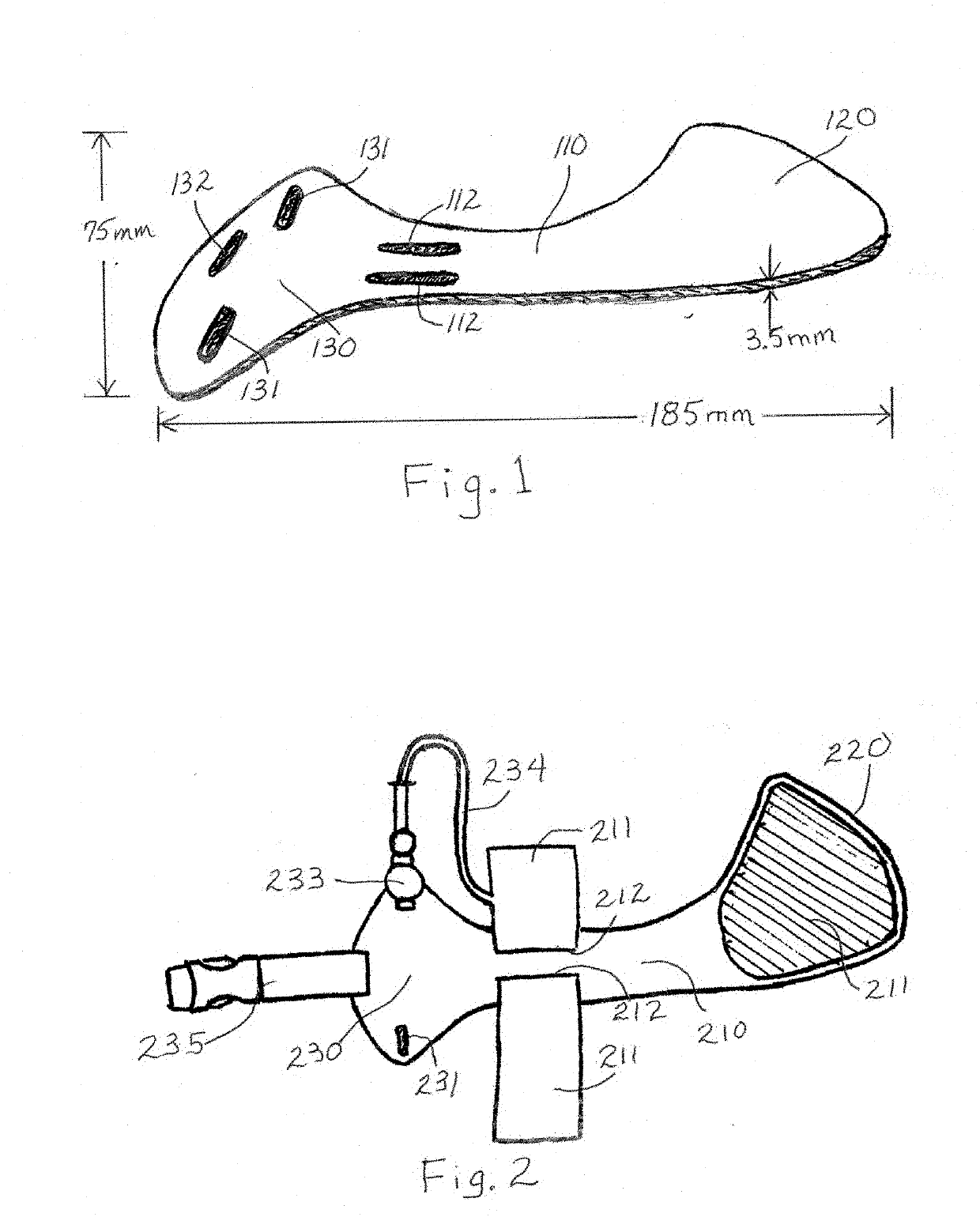Extremity stabilization system for medical procedures
a stabilization system and medical procedure technology, applied in the field of safe stabilization of the extremity of medical patients, can solve the problems of high cost and potentially dangerous sedation of patients, current method or prior art is extremely crude and archaic, and patients are injected with expensive and potentially dangerous sedation, etc., to reduce risk and cost, improve comfort and safety, and reduce health care costs of medical procedures
- Summary
- Abstract
- Description
- Claims
- Application Information
AI Technical Summary
Benefits of technology
Problems solved by technology
Method used
Image
Examples
Embodiment Construction
[0016]One embodiment of the rigid device is illustrated in the isometric view of FIG. 1. The device shown has a flat board-type structure of uniform thickness composed of a rigid or semi-rigid material with a length and width to sufficiently accommodate the subject patient extremity and a shaft section 110 connecting a proximal end 120 and a distal end 130. One embodiment indicates a nominal length of 185 mm, a nominal width of 75 mm, and a nominal thickness of 3.5 mm. However, the rigid device may come in a plurality of dimensions and shapes depending on the age, size, weight and strength of the patient and the stiffness of the material of the device. The shaft 110 has slots 112 to accept attachments or elements shown in the embodiment of FIG. 2.
[0017]In this embodiment the proximal end 120 is oblong shaped to comfortably slide under the shoulder area of the patient for upper extremity stabilization or the buttock / hip area of the patient for lower extremity stabilization. This embo...
PUM
 Login to View More
Login to View More Abstract
Description
Claims
Application Information
 Login to View More
Login to View More - R&D
- Intellectual Property
- Life Sciences
- Materials
- Tech Scout
- Unparalleled Data Quality
- Higher Quality Content
- 60% Fewer Hallucinations
Browse by: Latest US Patents, China's latest patents, Technical Efficacy Thesaurus, Application Domain, Technology Topic, Popular Technical Reports.
© 2025 PatSnap. All rights reserved.Legal|Privacy policy|Modern Slavery Act Transparency Statement|Sitemap|About US| Contact US: help@patsnap.com

